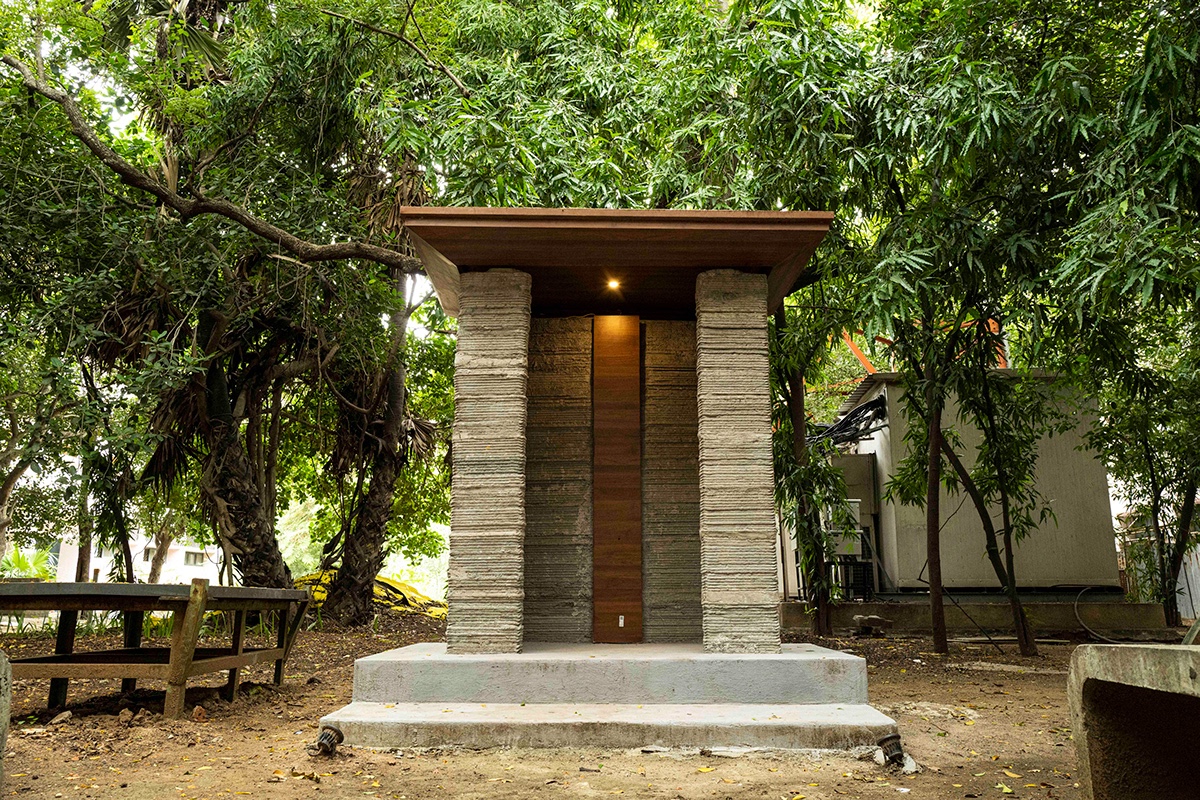India’s acceleration of its investment in 3D printing over the past year has been striking, and lately the country appears to be especially intent on exploring 3D printed homes. The most active player in that space thus far is Chennai-based Tvasta Manufacturing Solutions, which became India’s first additive construction (AC) startup when it was founded in 2016.
Tvasta’s status as one of the only entities with real experience in this still quite unformed sector led to the startup’s attraction of significant international investment in a seed-round of funding last fall, including almost half a million dollars from the U.S. nonprofit, Habitat for Humanity. Now, a longstanding domestic construction materials firm, India Cements Ltd, is announcing that it has entered into a strategic partnership with Tvasta.

At a press conference announcing the partnership, C Vidyashankar, Tvasta’s chief operating officer (COO), asserted, “As the world nations are joining their hands together to combat this challenge, it is apparent that only an irrevocable commitment to adapt to sustainable means of manufacture, without compromising on quality or quantity would offer any chance. While most industry verticals have formulated strategies to minimize, if not eliminate, carbon footprint, the construction industry is still working with decades-old methodologies.”
Rupa Gurunath, whole-time director of India Cements, commented, “‘Sustainability’ is a new phenomenon for the construction industry, and we are privileged that this partnership is just about to bring it within the easy reach of the common man in our country.”
The idea about sustainability being not just untapped but in fact essentially brand-new to legacy construction is something you hear often from people in the AC sector, and it’s possibly the most compelling argument in favor of applying additive manufacturing (AM) techniques to construction, specifically. It’s still difficult for proponents of other AM techniques to say with hard data, at this point, that the new way of doing things is unequivocally more sustainable than the old way of doing things. However, regarding construction, for so many reasons, it’s hard to imagine a less sustainable way of doing things than how they’re currently done.

To put it bluntly, then, it’s just way easier for AC to start delivering on the promise of being “greener” compared to its legacy counterpart, than it is for the rest of the AM sectors. AC may still be at least a few years away from being more economical than conventional construction. But it seems difficult to deny that on a house-for-house basis, the carbon footprint of AC could already be lower than that of conventional construction, were the newer technology to start scaling up immediately.
Additionally, more so than probably any other country, India needs to develop a wider range of reliable solutions for minimizing the ecological impact of its industrial and infrastructural systems over the next century. Not only is India the world’s third-largest aggregate consumer of energy to China and the United States. Also, it has been suffering the brunt of global warming’s worst symptoms in a way those two countries largely haven’t yet, and may never have to. For India, geography simply prefigures just about the worst that the planet’s rapidly changing climate has to offer.
The silver lining is that what for China and the U.S. still seems to be a matter of choosing whether or not to plan ahead, has already for some time in India been a matter of survival. It’s less of a risk for India to invest on new technologies than it is for the two other of the three largest nations in the world, and the potential reward is also much higher. To get an idea of where its investment is headed, as alluded to at the beginning of this post, it seems like India has made AM the centerpiece of its Industry 4.0 strategy, and its government is treating AC as a vital part of the equation.
Moreover, Gautam Adani — the Indian port and energy magnate whose increase in net worth over the last couple years just moved him up to number one on the list of Asia’s wealthiest individuals — recently purchased the Indian division of Holcim, one of the world’s largest cement manufacturers. Holcim has extensive interests in the AC sector, so it’s likely Adani, a major investor in renewables, also has a business interest in AC. In a nation that has an estimated housing shortage of 72 million, with over 50 million of those homes being in rural areas, rapid scale-up and deployment of the technology could feasibly help make a dent in its carbon footprint over the next couple of decades. If that happens, the country could also become a giant testing ground for AC.
Images courtesy of Tvasta
Subscribe to Our Email Newsletter
Stay up-to-date on all the latest news from the 3D printing industry and receive information and offers from third party vendors.
You May Also Like
3D Printing News Briefs, April 13, 2024: Robotics, Orthotics, & Hypersonics
In 3D Printing News Briefs today, we’re focusing first on robotics, as Carnegie Mellon University’s new Robotics Innovation Center will house several community outreach programs, and Ugogo3D is now working...
Rail Giant Alstom Saves $15M with 3D Printing Automation Software 3D Spark
3D Spark has entered into a three-year deal with the rail giant Alstom. Alstom, a transport behemoth with annual revenues of $16 billion, specializes in the manufacture of trains, trams,...
Meltio Expands Global Reach with New Partnerships in the Americas and Europe
Spanish 3D printing manufacturer Meltio has expanded its sales network across the globe. With the addition of three new partners in the United States, Brazil, Argentina, and Italy, Meltio aims...
3D Printing Webinar and Event Roundup: April 7, 2024
Webinars and events in the 3D printing industry are picking back up this week! Sea-Air-Space is coming to Maryland, and SAE International is sponsoring a 3D Systems webinar about 3D...































